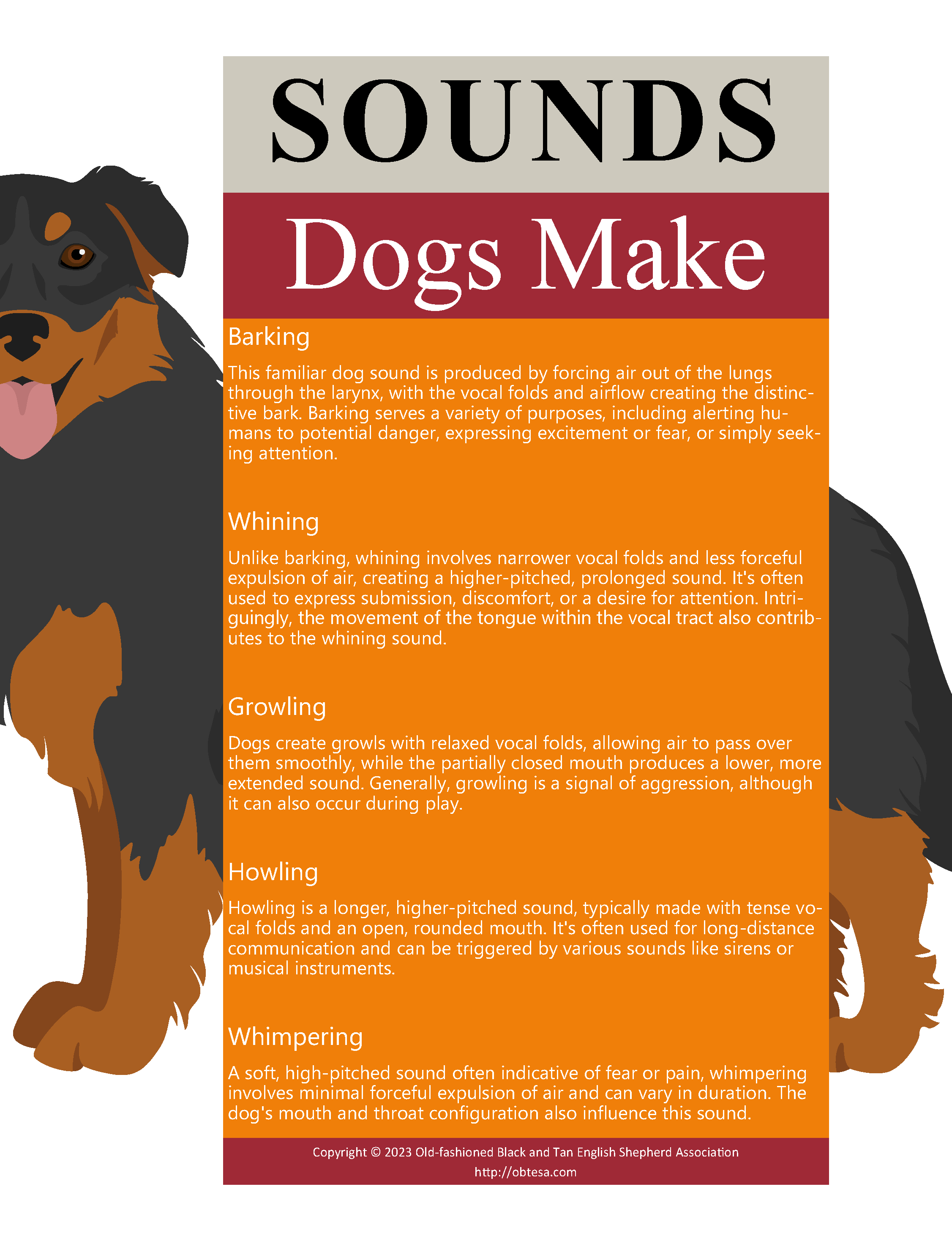From barks and growls to whines and howls, dogs employ a fascinating array of vocalizations to communicate with humans and other dogs. Dogs, like many other animals, have a surprisingly intricate and nuanced system of communication that allows them to express a wide range of emotions and intentions.
First, let’s explore some of the common sounds dogs make:
- Barking: This familiar dog sound is produced by forcing air out of the lungs through the larynx, with the vocal folds and airflow creating the distinctive bark. Barking serves a variety of purposes, including alerting humans to potential danger, expressing excitement or fear, or simply seeking attention.
- Whining: Unlike barking, whining involves narrower vocal folds and less forceful expulsion of air, creating a higher-pitched, prolonged sound. It’s often used to express submission, discomfort, or a desire for attention. Intriguingly, the movement of the tongue within the vocal tract also contributes to the whining sound.
- Growling: Dogs create growls with relaxed vocal folds, allowing air to pass over them smoothly, while the partially closed mouth produces a lower, more extended sound. Generally, growling is a signal of aggression, although it can also occur during play.
- Howling: Howling is a longer, higher-pitched sound, typically made with tense vocal folds and an open, rounded mouth. It’s often used for long-distance communication and can be triggered by various sounds like sirens or musical instruments.
- Whimpering: A soft, high-pitched sound often indicative of fear or pain, whimpering involves minimal forceful expulsion of air and can vary in duration. The dog’s mouth and throat configuration also influence this sound.
However, dogs also employ non-vocal forms of communication. For instance, agonistic tooth-snapping, a mechanical rather than vocal display, involves rapid opening and closing of the jaws. This quieter, defensive signal is typically used in close, confrontational situations.
Understanding canine communication is further complicated by the fact that there are still many unknowns, primarily due to the variability between breeds and individual dogs. It’s also important to note that vocalizations are not merely the product of a dog’s vocal apparatus. They are influenced by emotional states, social contexts, and learned behaviors.
Cohen and Fox’s seminal 1976 study on canid vocal communication identified 12 different vocal sounds in Canidae, with ten produced by dogs. Interestingly, aside from panting (which is generally a physiological response to heat or stress), all these sounds are also found in wolves, reflecting the close evolutionary relationship between the two species.
In conclusion, canine communication is a rich and nuanced field, drawing upon a wide range of vocal and non-vocal signals to convey a variety of emotions and intentions. Recognizing and understanding these signals is crucial for anyone wishing to build a stronger bond with their canine companion. As with any form of communication, attention to context, individual differences, and non-verbal cues are all key to decoding the language of dogs.
References
- Cohen, J.A., & Fox, M.W. (1976). Vocalizations in wild canids and possible effects of domestication. Behavioural Processes, 1(1), 77-92., http://esbt.us/gz
Further Reading
- Yin, S. (2002). A New Perspective on Barking in Dogs (Canis familiaris). Journal of Comparative Psychology, 116(2), http://esbt.us/h0.
- Lord, K., Feinstein, M., Smith, B., & Coppinger, R. (2013). Variation in reproductive traits of members of the genus Canis with special attention to the domestic dog (Canis familiaris). Journal of Zoology, 289(4), 257-272., http://esbt.us/h1.
- Belyaev, D. K. (1979). Destabilizing selection as a factor in domestication. Journal of Heredity, 70(5), 301-308., http://esbt.us/h2.

